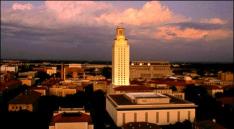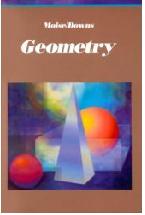 The website is in construction. New files will be uploaded as soon as they are available.
The website is in construction. New files will be uploaded as soon as they are available.
EDWIN EVARISTE MOISE
New Orleans, Louisiana 1918 - New York, New York 1998

- Brief scientific biography
- Contributions to Education
- Relevant bibliography
- Publications on the teaching of mathematics
Brief scientific biography
Edwin Evariste Moise was born in New Orleans, Louisiana.

University of Texas
From 1947 to 1960, Moise taught at the University of Michigan, where he rose to the rank of professor. He began his

Queens College, CUNY
Moise wrote a number of successful school and college mathematics textbooks and a treatise on geometric topology. In 1961, he was elected a fellow of the American Academy of Arts and Sciences. He served as vice-president of the American Mathematical Society in 1973-1974 and as president of the Mathematical Association of America in 1967-1968. From 1955 to 1958, he served on the Executive Committee of the International Commission on Mathematical Instruction.
Contributions to education
Moise was a member of the geometry writing team when the School Mathematics Study Group, with a grant from the U.S. National Science Foundation, started its work in the summer of 1958 at Yale University. The team produced a course outline and some sample pages for a 10th-grade geometry textbook. Moise took a leave of absence from the University of Michigan during the spring semester of 1959 to write the first draft of the textbook (WOOTEN, 1965, p. 55). In the summer of 1959, the SMSG writing teams met at the University of Colorado to complete a set of textbooks for trial in secondary schools, and they met during the summer of 1960 at Stanford University to revise the books in light of the tryout. Moise (1962) noted that SMSG had begun what he calleda different sort of work. Its "crash program" is finished; and it is expected that its high-school books will be withdrawn from circulation in another two or three years, when similar books become available through commercial publishers. From now on, the main job of the SMSG will be long-range experimentation with courses and programs that are not necessarily suitable for wide use in the near future. (p. 90)

Writing about the new programs in mathematics that were appearing during the early 1960s, Moise (MOISE, CALANDRA, DAVIS, KLINE, & BACON, 1965) praised the textbooks that SMSG had produced:
One thing was obvious . . . as soon as the books were written, and before they were tried: the improvement in intellectual content was so great that they surely would produce either an educational improvement or a collapse of classroom morale. The latter has not occurred; the new programs in general are far more popular than the old ones. (p. 3)Under Moise's influence, the SMSG Geometry textbook had replaced Euclid's postulates of with metric postulates so as to take advantage of students' knowledge of the real number system and the algebraic treatment of proportionality, an action very much supported by mathematicians such as Saunders Mac Lane (1959) but criticized by others such as Alexander Wittenberg (1963) and Morris Kline (1973).
Moise (1962), however, remained satisfied with the progress he and his colleagues had made in reforming school mathematics:
I cannot believe that anybody has found the final answer to any of our problems; I cannot even believe that such final answers exist. But the progress made in the past few years forms the basis of a long overdue revolution in mathematical education, and I am convinced that even better work is soon to come. (p. 100)
Relevant bibliography
E.E. MOISE 1952, Affine structures in 3-manifolds: V. The triangulation theorem and Hauptvermutung, Annals of Mathematics (2nd Series), 56, 96-114
E.E. MOISE 1963a, Elementary geometry from an advanced standpoint, Reading, MA: Addison-Wesley
E.E. MOISE, F.L. DOWNS 1964, Geometry, Reading, MA: Addison-Wesley
E.E. MOISE 1977, Geometric topology in dimensions 2 and 3, Berlin: Springer-Verlag
E.E. MOISE 1982, Introductory problem courses in analysis and topology, Berlin: Springer-Verlag
R. ANDERSON, B. FITZPATRICK 2000, An interview of Edwin Moise, Topological Commentary, 5, retrieved from the TopCom web site:
http://at.yorku.ca/t/o/p/c/94.htm
B. FITZPATRICK, A.C. LEWIS 2005, The legacy of R.L. Moore: The students of R. L. Moore, retrieved from the Legacy of the R.L. Moore Project web site:
http://www.discovery.utexas.edu/rlm/reference/fitzpatrick.html
M. KLINE 1973, Why Johnny can't add: The failure of the new math, New York: St. Martin's Press
S. MAC LANE 1959, Metric postulates for plane geometry, American Mathematical Monthly, 66, 543-555
W. SAXON 1998 (December 28), Edwin Evariste Moise, 79, mathematics scholar, The New York Times, B8
A. WITTENBERG 1963, Sampling a sample mathematical text, American Mathematical Monthly, 70, 452-459
W. WOOTEN 1965, SMSG: The making of a curriculum, New Haven, CT:Yale University Press
Publications on the teaching of mathematics
P.R. HALMOS, E.E. MOISE, G. PIRANIAN 1975, The problem of learning to teach, American Mathematical Monthly, 82, 466-474
E.E. MOISE 1960, The SMSG Geometry Program: A description of its development, Mathematics Teacher, 53, 437-442
E.E. MOISE 1962, The new mathematics programs, School Review, 70, 82-101, reprinted in 1964, in P. C. Rosenbloom (edited by), Modern viewpoints in the curriculum, New York: McGraw-Hill, 73-87
E.E. MOISE 1963b, Some reflections on the teaching of area and volume, American Mathematical Monthly, 70, 459-466
E.E. MOISE 1965, Activity and motivation in mathematics, American Mathematical Monthly, 72, 407-412
E.E. MOISE 1975, The meaning of Euclidean geometry in school mathematics, Mathematics Teacher, 68, 472-477
E.E. MOISE 1984, Mathematics, computation, and psychic intelligence, in V.P. Hansen, M.J. Zweng (edited by), Computers in mathematics education (1984 Yearbook of the National Council of Teachers of Mathematics, Reston, VA: NCTM, 35-42
E.E. MOISE, A. CALANDRA, R.B. DAVIS, M. KLINE, H.M. BACON 1965, Five views of the "new math" , (Occasional Paper n. 8), Washington, DC: Council for Basic Education
Author
Jeremy Kilpatrick
University of Georgia
jkilpat@uga.edu
